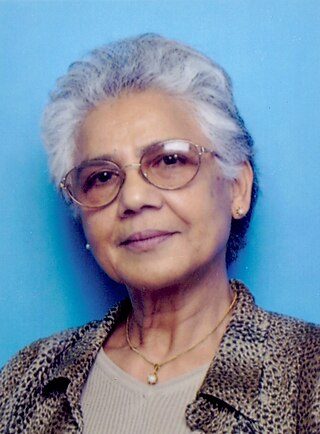Related Research Articles

Systemic functional grammar (SFG) is a form of grammatical description originated by Michael Halliday. It is part of a social semiotic approach to language called systemic functional linguistics. In these two terms,systemic refers to the view of language as "a network of systems,or interrelated sets of options for making meaning";functional refers to Halliday's view that language is as it is because of what it has evolved to do. Thus,what he refers to as the multidimensional architecture of language "reflects the multidimensional nature of human experience and interpersonal relations."
Critical discourse analysis (CDA) is an interdisciplinary approach to the study of discourse that views language as a form of social practice. CDA combines critique of discourse and explanation of how it figures within and contributes to the existing social reality,as a basis for action to change that existing reality in particular respects. Scholars working in the tradition of CDA generally argue that (non-linguistic) social practice and linguistic practice constitute one another and focus on investigating how societal power relations are established and reinforced through language use. In this sense,it differs from discourse analysis in that it highlights issues of power asymmetries,manipulation,exploitation,and structural inequities in domains such as education,media,and politics.
Theodoor Jacob "Theo" van Leeuwen is a Dutch linguist and one of the main developers of the sub-field of social semiotics. He is also known for his contributions to the study of Multimodality;he wrote with Gunther Kress Reading Images:The Grammar of Visual Design,one of the most influential books on the topic.

Ruqaiya Hasan was a professor of linguistics who held visiting positions and taught at various universities in England. Her last appointment was at Macquarie University in Sydney,from which she retired as emeritus professor in 1994. Throughout her career she researched and published widely in the areas of verbal art,culture,context and text,text and texture,lexicogrammar and semantic variation. The latter involved the devising of extensive semantic system networks for the analysis of meaning in naturally occurring dialogues.

James Robert Martin is a Canadian linguist. He is Professor of Linguistics at The University of Sydney. He is the leading figure in the 'Sydney School' of systemic functional linguistics. Martin is well known for his work on discourse analysis,genre,appraisal,multimodality and educational linguistics.

Christian Matthias Ingemar Martin Matthiessen is a Swedish-born linguist and a leading figure in the systemic functional linguistics (SFL) school,having authored or co-authored more than 100 books,refereed journal articles,and papers in refereed conference proceedings,with contributions to three television programs. One of his major works is Lexicogrammatical cartography (1995),a 700-page study of the grammatical systems of English from the perspective of SFL. He has co-authored a number of books with Michael Halliday. Since 2008 he has been a professor in the Department of English at the Hong Kong Polytechnic University. Before this,he was Chair of the Department of Linguistics at Macquarie University in Sydney.
Media linguistics is the linguistic study of language use in the media. The fundamental aspect of media linguistics as a new systematic approach to the study of media language is that media text is one of the most common forms of language existence today. It studies the functioning of language in the media sphere,or modern mass communication presented by print,audiovisual,digital,and networked media. Media linguistics investigates the relationship between language use,which is regarded as an interface between social and cognitive communication practice,and public discourse conveyed through media.

Multimodality is the application of multiple literacies within one medium. Multiple literacies or "modes" contribute to an audience's understanding of a composition. Everything from the placement of images to the organization of the content to the method of delivery creates meaning. This is the result of a shift from isolated text being relied on as the primary source of communication,to the image being utilized more frequently in the digital age. Multimodality describes communication practices in terms of the textual,aural,linguistic,spatial,and visual resources used to compose messages.
Svenja Adolphs is a British linguist whose research involves analysis of corpus data including sources of multimodal material such as the Nottingham Multimodal Corpus (NMMC) to examine communication in new forms of digital records. Using visual mark-up systems,her work allows a better understanding of the nature of natural language use. She is a co-founder of the Health Language Research Group at the University of Nottingham,bringing together academics and clinicians to advance the work of applied linguistics in health care settings.
Jane Sunderland is a British linguist and playwright. She is currently an Honorary Reader in Gender and Discourse at the Department of Linguistics and English Language of Lancaster University,United Kingdom. Her research focuses on language and gender,Identity and language learning and critical discourse analysis.
Rosalind Ivanić is a Yugoslav-born British linguist. She is currently an honorary professor at the Department of Linguistics and English Language of Lancaster University,United Kingdom. Her research focuses on applied linguistics with a special focus on literacy,intertextuality,multimodal communication,adult literacy,educational linguistics,critical language awareness,punctuation,and second language writing. Along with Theo van Leeuwen and David Barton,she is considered one of the most prominent researchers on literacy.
Veronika Koller is an Austrian-British linguist. She is Professor of Discourse Studies at the Department of Linguistics and English Language of Lancaster University,United Kingdom. Her research focuses on critical discourse analysis.
Alice Marie-Claude Caffarel-Cayron is a French-Australian linguist. She is an Honorary Senior Lecturer in Linguistics at the University of Sydney. Caffarel is recognized for the development of a Systemic Functional Grammar of French which has been applied in the teaching of the French language,Discourse analysis and Stylistics at the University of Sydney. Caffarel is recognised as an expert in the field of French Systemic Functional Linguistics (SFL).
Louise Jane Ravelli is an Australian linguist. She is a professor in the School of the Arts and Media at the University of New South Wales,Australia. Her research expertise includes multimodal communication,museum communication,discourse analysis,and systemic functional grammar,using the frameworks of Systemic Functional Linguistics,Social Semiotics,and Multimodal Discourse Analysis.
Michele Zappavigna is an Australian linguist. She is an associate professor at the University of New South Wales,Sydney. Her major contributions are based on the discourse of social media and ambient affiliation. Her work is interdisciplinary and covers studies in systemic functional linguistics (SFL),corpus linguistics,multimodality,social media,online discourse and social semiotics. Zappavigna is the author of six books and numerous journal articles covering these disciplines.
Frances Helen Christie,is Emeritus professor of language and literacy education at the University of Melbourne,and honorary professor of education at the University of Sydney. She specialises in the field of systemic functional linguistics (SFL) and has completed research in language and literacy education,writing development,pedagogic grammar,genre theory,and teaching English as a mother tongue and as a second language.
Suzanne Eggins is an Australian linguist who is an Honorary Fellow at Australian National University (ANU),associated with the ANU Institute for Communication in Health Care. Eggins is the author of a best selling introduction to systemic functional linguistics and she is known for her extensive work on critical linguistic analysis of spontaneous interactions in informal and institutional healthcare settings.
John Arnold Bateman is a British linguist and semiotician known for his research on natural language generation and multimodality. He has worked at Kyoto University,at the USC Information Sciences Institute,at the German National Research Center for Information Technology,at Saarland University,and at the University of Stirling. As of 2023,he is Professor of English Applied Linguistics at the University of Bremen,Germany.
Mary Macken-Horarik is an Australian linguist. She is an adjunct Associate Professor in the Institute for Learning Sciences and Teacher Education (ILSTE) at the Australian Catholic University. This title was awarded "in recognition of her international reputation and scholarly expertise in the field of Senior Secondary English Curriculum." Macken-Horarik is known for her contributions to systemic functional linguistics and its application to literacy,language and English education.
Mary J. Schleppegrell is an applied linguist and Professor of Education at the University of Michigan. Her research and praxis are based on the principles of Systemic Functional Linguistics (SFL),a theory derived from the work of social semiotic linguist Michael Halliday. Schleppegrell is known for the SFL-based literacy practices she has continuously helped to develop for multilingual and English language learners throughout her decades long career,which she began as an educational specialist before transitioning to the field of applied linguistics. As a result,her publications demonstrate a deep understanding of both the theories and practices related to teaching and learning.
References
- ↑ "Kay O'Halloran - University of Liverpool". www.liverpool.ac.uk. Retrieved 2019-12-16.
- ↑ O'Halloran, Kay L. (November 2008). "Systemic functional-multimodal discourse analysis (SF-MDA): constructing ideational meaning using language and visual imagery". Visual Communication. 7 (4): 443–475. doi:10.1177/1470357208096210. ISSN 1470-3572. S2CID 145339400.
- ↑ "Public Staff Profile". Staff Portal. Retrieved 2019-12-16.
- ↑ O'Toole, Michael (5 November 2012). Kay L. O'Halloran, Encyclopedia of Applied Linguistics. doi:10.1002/9781405198431.wbeal0880. ISBN 9781405194730.
- ↑ Mary J Schleppegrell (2007) The Linguistic Challenges of Mathematics Teaching and Learning: A Research Review, Reading & Writing Quarterly, 23:2, 139-159, doi : 10.1080/10573560601158461
- ↑ Leung, Constant (2007-12-01). "Kay L. O'Halloran: MATHEMATICAL DISCOURSE—LANGUAGE, SYMBOLISM AND VISUAL IMAGES". Applied Linguistics. 28 (4): 630–634. doi:10.1093/applin/amm040. ISSN 0142-6001.
- ↑ Verena Haser, Anita Auer, Bert Botma, Marion Elenbaas, Wim van der Wurff, Beáta Gyuris, Julie Coleman, Edward Callary, Lieselotte Anderwald, Andrea Sand, Marcus Callies, Rocío Montoro, I English Language, The Year's Work in English Studies, Volume 89, Issue 1, 2010, Pages 1–168, doi : 10.1093/ywes/maq001
- ↑ "Routledge Studies in Multimodality".
- ↑ O’Halloran, K. L., & Judd, K. (2002). Systemics. 1.0. CD-ROM. Singapore: Singapore University Press.
- ↑ O’Halloran, K. L., Tan, S. and E, M. K. L. (2015). Multimodal Analysis for Critical Thinking. Learning, Media and Technology. doi : 10.1080/17439884.2016.1101003.